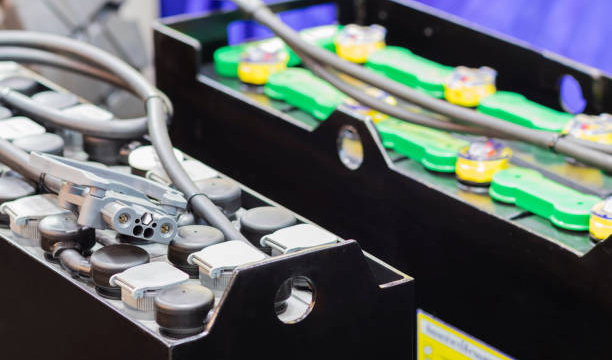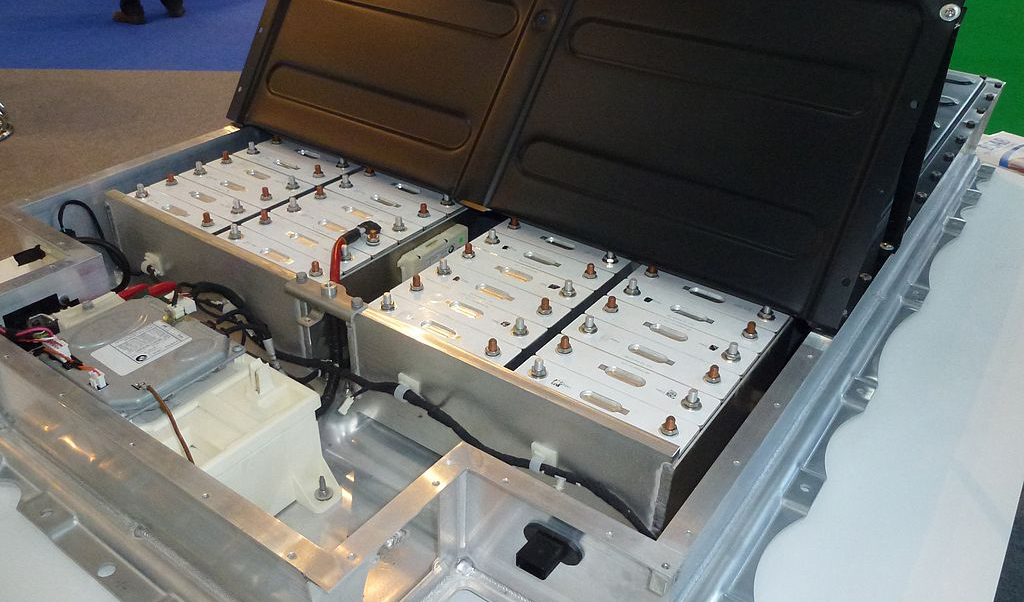Lead acid and lithium batteries are the two most common types of rechargeable batteries. Both types are widely used in our lives and in a variety of industries. We are dedicated to the selection of lead acid and lithium battery charger products, and we are glad here to introduce the working principles and specialties of the two types of batteries and battery chargers to you in this blog. Hopefully it will answer some questions from you.
1. Structure
In term of structure, a traditional lead acid battery includes protective casting, positive and negative plates, separators, battery tanks, electrolyte, terminals, etc. The positive plate of the battery is aluminum dioxide, and the negative plate is lead. Lead acid batteries charge and discharge by converting chemical and direct current energy into each other.
Lithium batteries, on the other hand, are made of lithium metal or lithium alloys, and use non-aqueous electrolytes. The principle applied is to rely on the movement of lithium ions between positive and negative electrodes to generate electricity.
2. Application
Lead acid batteries have been around for more than 150 years. They are widely used in automobiles as power sources for starting and other accessories. In addition to automobiles, they are also widely used in electric bicycles, UPS, control switches, etc. Some high-density lead acid batteries can also be used as backup power for telecommunication base stations.
Lithium batteries do not have such long history as lead acid batteries. They have come into widespread use in the last twenty or thirty years. Since the end of the 20th century, with the development of microelectronic technology, the miniaturization of various devices has put forward higher requirements for power supply. So, lithium batteries have been applied on a large scale. They are now everywhere in mobile phones and many other electronic devices. Moreover, lithium batteries are increasingly being used where lead acid batteries used to be.

3. Charging modes
The charging process of lead acid batteries is usually divided into three stages: constant current charging, constant voltage charging and floating charging.
In the constant current charging stage, the charging current from the charger to the battery remains the same. As the battery power increases, the charging voltage will continue to rise. This stage usually lasts about 5-7 hours. During the constant voltage charging stage, as the previous stage of constant current charging proceeds, when the voltage rises to a set value, the charger will be switched to start charging at a constant output voltage. The charging current decreases as the voltage increases. This stage lasts about 2 hours. The third is called the floating charging stage, also known as trickle charging stage. At this stage, with constant voltage charging, the battery is basically full. When the battery power reaches a set value, the charger will automatically lower the output voltage to a set value and keep it constant. At the same time, the charging current will continue to decrease, and keep for 2-3 hours until the battery is fully charged.
Lithium batteries are different from lead acid ones. Lithium batteries adopt a constant current constant voltage (CCCV) charging mode. They require charging at a constant voltage, or only allow voltage fluctuations within a very small range. Lithium batteries do not have the floating or trickle charging stage of lead acid batteries. And most lithium batteries are equipped with chargers that have automatic shutdown function to turn the charger off when batteries are fully charged.
4. Service life
The cycle life of a lead acid battery is generally 300-400 times, with the high-end types can reach about 500 times. As for average service life, it is generally about 2-4 years. They have the advantages of mature technology, higher security, and low manufacturing cost. But their disadvantages are also obvious. They are relatively bulky, and harmful to environment after abandoned.
Lithium batteries typically have a cycle life of about 1,000 times, much longer than the lead acid ones. The advantages of lithium batteries are higher energy density, lower self-discharge rate when idle, and no memory effect. The drawbacks are that they are more expensive and slightly less safe than lead acid batteries.
5. Use and maintenance of batteries and battery chargers
For lead acid batteries, if properly maintained in normal use, the stability and safety of the battery can be effectively guaranteed. Specifically, we should pay attention to the level of the sulfuric acid inside the battery. If the level is down, it is necessary to supplement the electrolyte in time to prevent potential accidents. In term of charging, too high charging volt or overcharging should be avoided since flammable hydrogen gas can be produced inside the battery. Once a spark is encountered, there is the possibility of an explosion.
For lithium batteries, the following points should also be paid attention to in the daily use. The first is to avoid overcharging. Not all lithium battery chargers have an automatic shutdown function, so be aware of this. The second is that when it is hot in summer, you need to avoid the battery from going too hot. Otherwise, there might be a short circuit in the battery, and lead to a fire or an explosion.

6. Whether battery chargers can be exchanged
Whether different chargers can be exchanged is also a problem we may encounter in the use of lead acid and lithium-ion batteries. For this, people have different opinions.
Traditionally, a lead acid battery charger cannot be used to charge lithium batteries, and vice versa. If you use a lead acid battery charger to charge a lithium battery, the main problem will be how to avoid its being overcharged. Generally, this is not recommended unless you can accurately set the charging voltage, turn off the charger’s automatic equalization function if there is, and disconnect the charger after it is completed in time. On the other hand, if we use a lithium battery charger to charge a lead acid battery, the charger will only provide a constant voltage to the battery. By doing so, it will drain the battery’s power and shortens the cycle life of the battery. If you do this over a long period of time, the lead acid battery’s capacity will decrease for sure.
In the above, we have introduced and compared lead acid and lithium batteries and their chargers from many aspects. Hopefully it will provide some help and suggestions for your daily use of batteries.
